
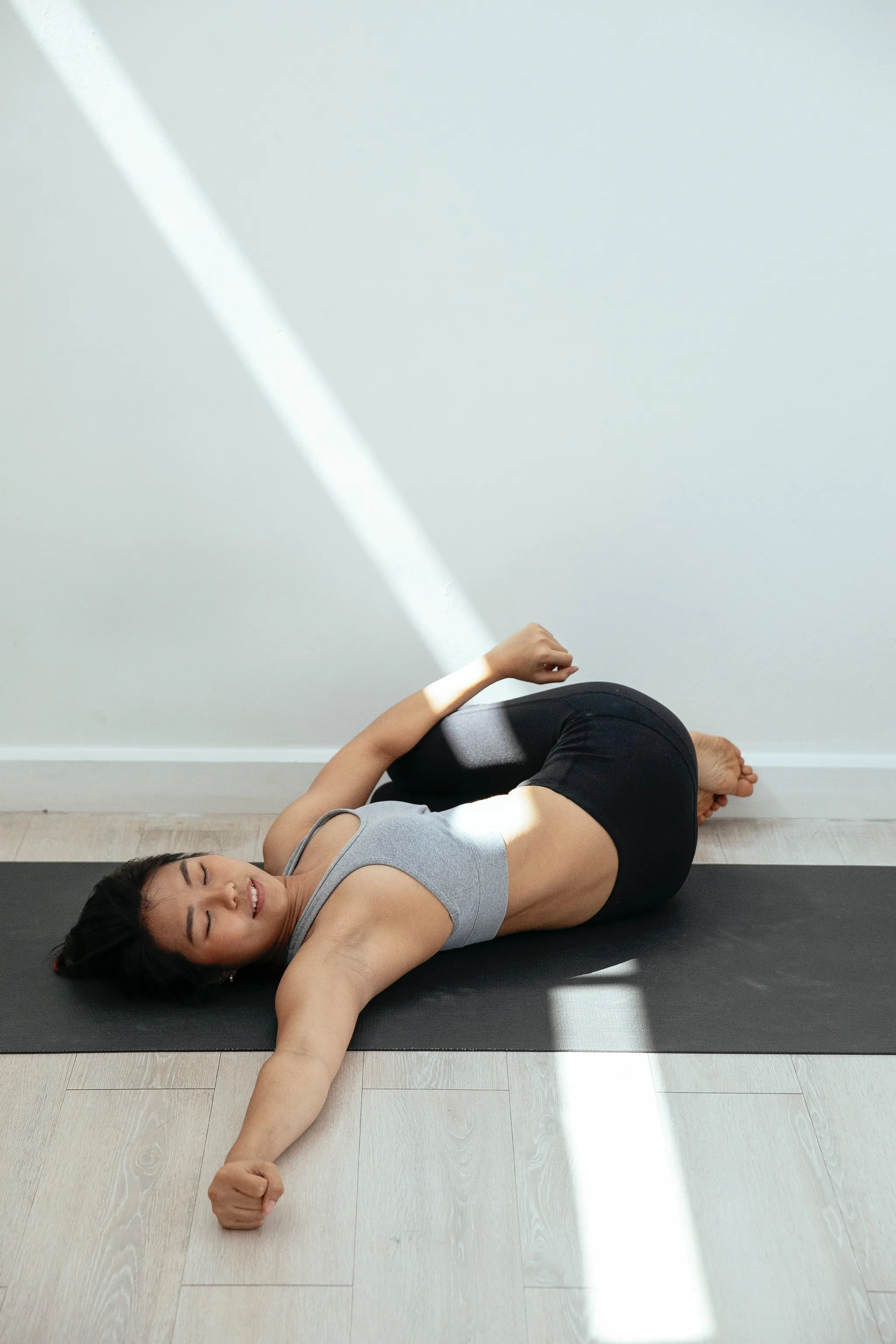
Do you suffer from Irritable Bowel Syndrome (IBS)? This common gastrointestinal disorder affects millions of people worldwide and can cause discomfort, bloating, gas, and irregular bowel movements. While there are medications available to manage symptoms, many people are turning to yoga as a natural and holistic approach to IBS management. In this article, we will explore what IBS is, the role of yoga in managing symptoms, and provide you with some helpful tips and practices to incorporate into your routine. By the end of this article, you will have a better understanding of how yoga can benefit those who suffer from IBS.
IBS, or Irritable Bowel Syndrome, is a common gastrointestinal disorder that affects the large intestine. It is characterized by chronic abdominal pain, discomfort, bloating, gas, and changes in bowel movements. The exact cause of IBS is still unknown, but it is believed to be a result of a combination of factors including stress, hormonal changes, and certain foods.
The symptoms of IBS can vary from person to person, but some of the most common include abdominal pain, bloating, constipation, diarrhea, and gas. These symptoms can be chronic and persistent, affecting daily life and causing discomfort and embarrassment.
Research has also suggested that certain triggers such as stress, certain foods (e.g., spicy or high-fat foods), and hormonal changes can cause or worsen IBS symptoms. While IBS is not a life-threatening condition, it can have a significant impact on quality of life, and management strategies are often necessary to alleviate symptoms.
Yoga is a holistic practice that has been shown to have many benefits for IBS management. Some of these benefits include:
Relieving Stress:
Yoga can be an effective way to manage stress, which is known to be a contributing factor in IBS. Practicing yoga can help reduce cortisol levels in the body, the hormone responsible for stress, and promote relaxation.
Regulating Digestion:
Many yoga poses involve gentle twisting and stretching of the abdomen, which can help to stimulate digestion and promote regular bowel movements. Additionally, yoga can help to reduce constipation and bloating, which are common symptoms of IBS.
Reducing Pain and Inflammation:
Yoga can help reduce pain and inflammation associated with IBS by increasing blood flow and oxygen to affected areas. Certain poses, such as seated forward bends and child's pose, can also help to release tension in the muscles of the abdomen, reducing discomfort and pain.
Strengthening Immune System:
Yoga has been shown to have a positive effect on the immune system, which can help to reduce the risk of infections and illnesses. This is particularly important for those with IBS, as the condition can weaken the immune system.
Enhancing Sleep Quality:
Poor sleep quality is a common problem for those with IBS. Practicing yoga before bed can help to promote relaxation and improve sleep quality, reducing fatigue and improving overall well-being.
By incorporating yoga into your IBS management plan, you can experience these benefits and find relief from symptoms.
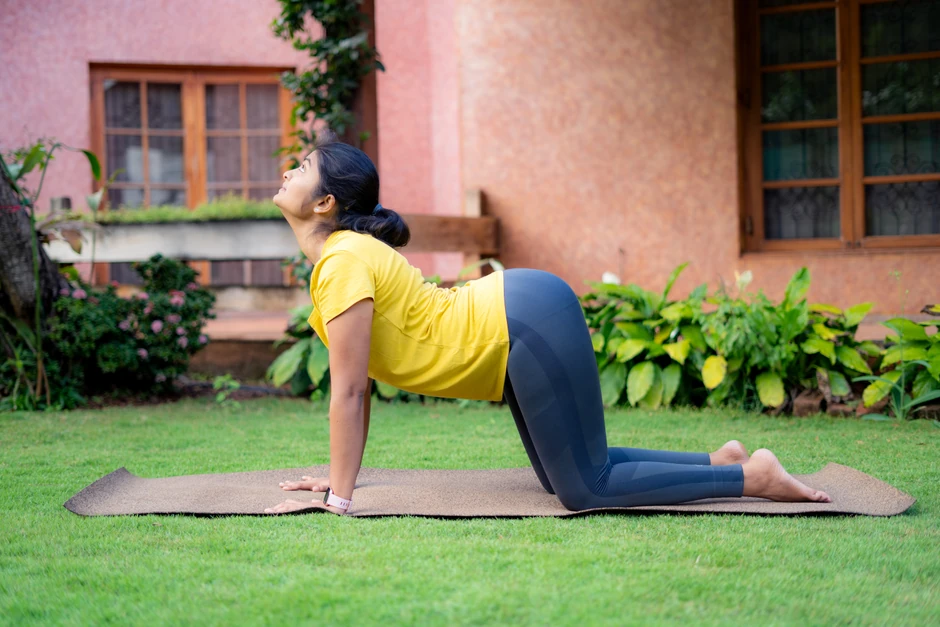
Start on your hands and knees, with your wrists directly under your shoulders and your knees under your hips. Inhale and lift your chest and tailbone towards the ceiling (Cow Pose). Exhale and round your spine towards the floor (Cat Pose). Repeat 5-10 times.
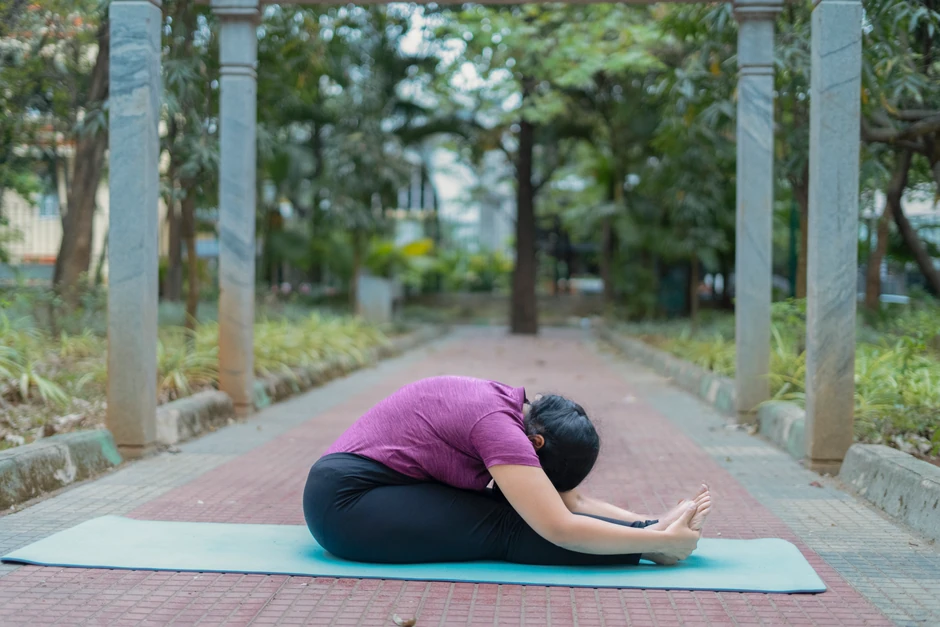
Sit on the floor with your legs straight out in front of you. Inhale and reach your arms up towards the ceiling, then exhale and fold forward, reaching for your toes. Hold for 30 seconds.
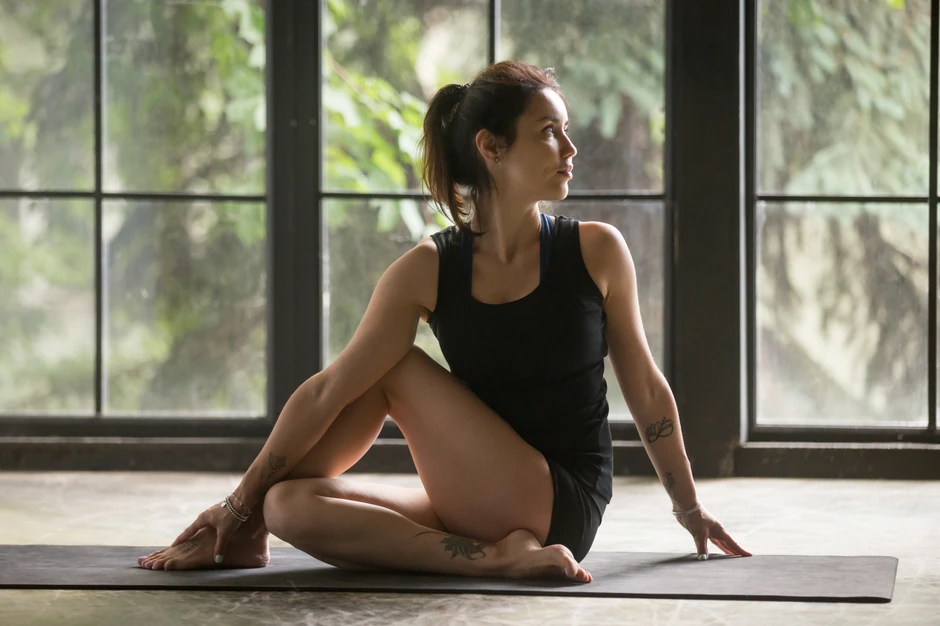
Sit on the floor with your legs straight out in front of you. Bend your right knee and place your foot on the outside of your left thigh. Twist your torso towards the right and place your right hand on the floor behind you. Hold for 30 seconds, then repeat on the other side.
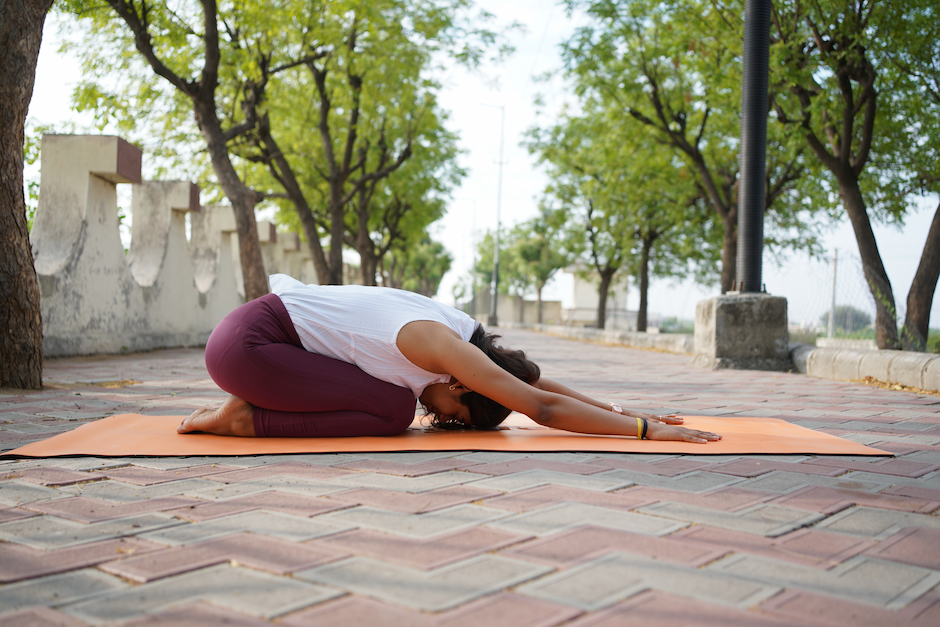
Start on your hands and knees, then lower your hips back towards your heels and rest your forehead on the floor. Extend your arms forward and hold for 30 seconds.

Lie on your back with your arms out to the sides. Bend your knees and lift your feet off the floor, then lower them to the left side of your body. Turn your head to the right and hold for 30 seconds. Repeat on the other side.

Lie on your back with your knees bent and your feet flat on the floor. Inhale and lift your hips towards the ceiling, keeping your feet and shoulders grounded. Hold for 30 seconds.

Lie on your back and bring your knees towards your chest. Grab the outside of your feet with your hands and gently pull your knees towards your armpits. Hold for 30 seconds.
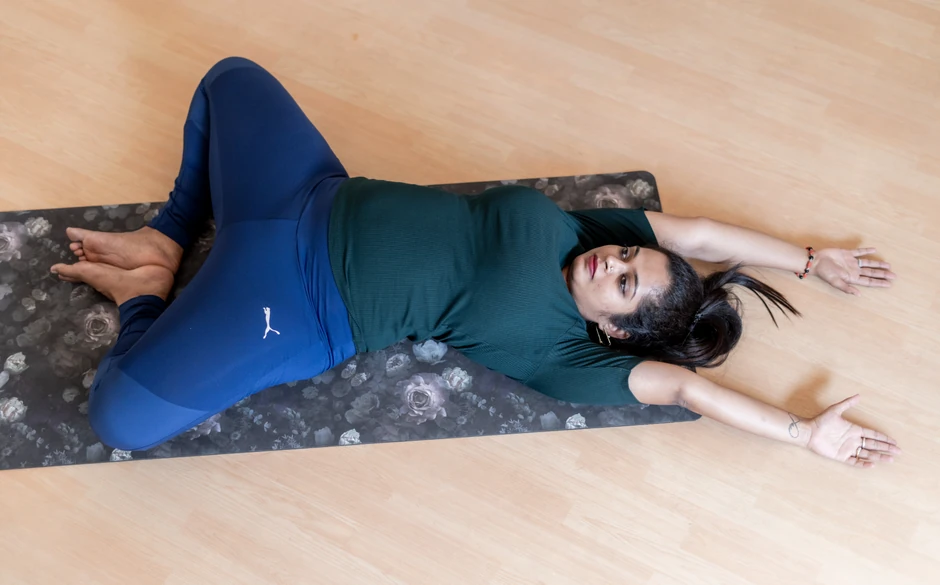
Lie on your back with your knees bent and your feet together. Allow your knees to fall out to the sides and rest your hands on your belly. Hold for 1-2 minutes.
_optimized.webp)
Stand with your feet hip-width apart and turn your right foot out to the side. Inhale and lift your arms out to the sides, then exhale and hinge at your hips, reaching your right hand towards your right ankle and your left arm towards the ceiling. Hold for 30 seconds, then repeat on the other side.
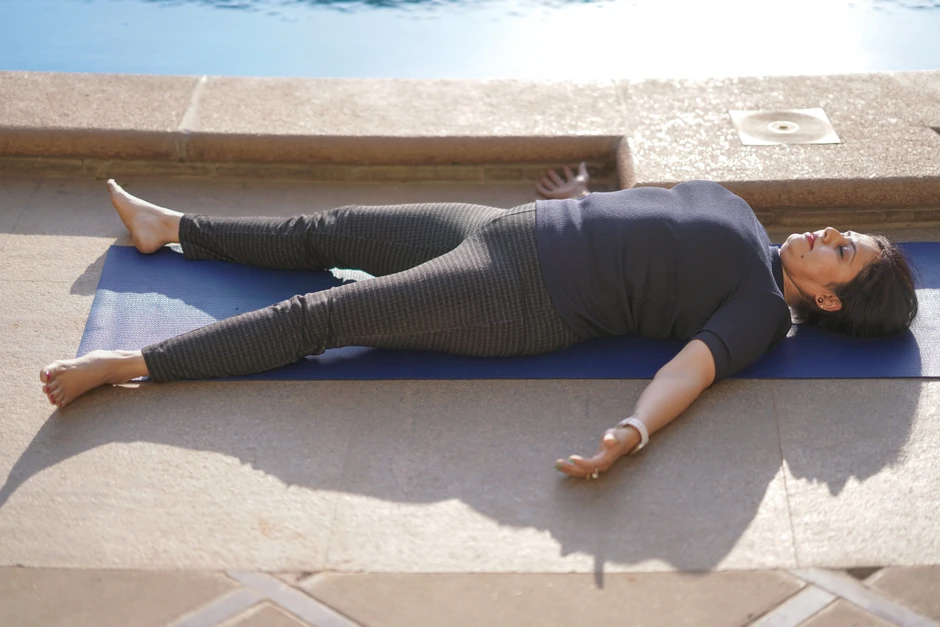
Lie on your back with your arms by your sides and your palms facing up. Close your eyes and focus on your breath, allowing your body to fully relax. Stay in this pose for 5-10 minutes.
By incorporating these yoga poses into your routine, you can experience relief from IBS symptoms and promote overall well-being. Remember to always listen to your body and move slowly and mindfully.
In addition to yoga poses, there are several other yoga practices that can be beneficial for managing IBS symptoms. These include pranayama, meditation, and relaxation techniques.
Kapalabhati:
Sit in a comfortable position and take a few deep breaths. Begin to exhale forcefully through your nose, followed by a passive inhale. Repeat this cycle for 10-20 breaths. Kapalabhati is known to stimulate digestion and can help alleviate symptoms of IBS.
Nadi Shodhana:
Sit in a comfortable position and place your left hand on your left knee with your palm facing up. Bring your right hand to your nose and use your thumb to close your right nostril. Inhale through your left nostril, then use your ring finger to close your left nostril as you exhale through your right nostril. Inhale through your right nostril, then use your thumb to close your right nostril as you exhale through your left nostril. Repeat this cycle for 5-10 minutes. Nadi Shodhana is a form of alternate nostril breathing that can help regulate the digestive system.
Meditation is a powerful tool for managing stress, which can exacerbate symptoms of IBS. A simple meditation practice involves finding a comfortable seated position, closing your eyes, and focusing on your breath. When thoughts arise, simply acknowledge them and return your attention to your breath.
Yoga Nidra: Yoga Nidra, also known as yogic sleep, is a guided relaxation practice that involves lying down and following the instructions of a teacher. The practice can help reduce stress and promote deep relaxation, which can be beneficial for managing IBS symptoms.
Sit or lie down in a comfortable position and begin to tense and relax each muscle group in your body, starting with your feet and moving up towards your head. This practice can help release tension in the body and promote relaxation.
Incorporating these yoga practices into your routine can help you manage IBS symptoms and promote overall well-being. Remember to listen to your body and move slowly and mindfully.
Yoga can be a powerful tool for managing IBS symptoms, but it can be challenging to develop a regular practice. Here are some tips for incorporating yoga into your daily life:
Developing a Regular Yoga Practice:
The key to developing a regular yoga practice is consistency. Start by setting aside a specific time each day for your practice, whether it's first thing in the morning or before bed. Start with a shorter practice, such as 10-15 minutes, and gradually work your way up to longer sessions.
Creating a Safe and Comfortable Space:
Creating a safe and comfortable space for your practice can help you feel more relaxed and focused. Find a quiet area where you won't be disturbed, and consider investing in a yoga mat and other props to support your practice.
Modifying Poses to Suit Your Needs:
It's important to modify yoga poses to suit your individual needs and abilities. If you're experiencing pain or discomfort, back off from the pose or modify it to make it more accessible. Remember that yoga is a personal practice, and there's no one-size-fits-all approach.
Setting Realistic Goals:
When starting a yoga practice, it's important to set realistic goals. Start with small goals, such as practicing yoga three times a week or mastering a specific pose, and gradually work your way up to bigger goals. Remember that yoga is a journey, and progress takes time.
Incorporating yoga into your daily life can be a powerful tool for managing IBS symptoms and promoting overall well-being. With consistency, patience, and a willingness to listen to your body, you can develop a yoga practice that works for you.
In addition to practicing yoga, there are other lifestyle changes that can help manage IBS symptoms:
Diet Modifications:
Certain foods can trigger IBS symptoms, so it's important to identify and avoid these triggers. Common triggers include dairy, gluten, caffeine, and spicy foods. Keeping a food diary can help identify which foods trigger your symptoms.
Stress Management Techniques:
Stress can exacerbate IBS symptoms, so it's important to find ways to manage stress. Techniques such as deep breathing, meditation, and regular exercise can help reduce stress levels.
Adequate Sleep:
Getting enough sleep is important for overall health and well-being, and can also help manage IBS symptoms. Aim for 7-9 hours of sleep each night, and establish a regular sleep schedule.
Hydration:
Drinking plenty of water can help regulate digestion and prevent constipation, a common symptom of IBS. Aim for at least eight glasses of water per day.
Regular Exercise:
Regular exercise can help regulate digestion and reduce stress levels, both of which can help manage IBS symptoms. Aim for at least 30 minutes of moderate exercise, such as brisk walking or cycling, most days of the week.
Incorporating yoga and other lifestyle changes into your daily routine can be a powerful tool for managing IBS symptoms and promoting overall well-being. By practicing yoga regularly, modifying your diet, managing stress, getting enough sleep, staying hydrated, and exercising regularly, you can take control of your IBS symptoms and improve your quality of life. Don't be afraid to try new things and experiment with different practices to find what works best for you. With time and dedication, you can find relief from IBS symptoms and enjoy a healthier, more vibrant life.
Yoga can help with IBS by reducing stress, improving digestion, and promoting relaxation.
Coping strategies for IBS include identifying trigger foods, practicing stress management, and seeking support.
The best position to lay down with IBS is on your left side, as it can aid in digestion and relieve pressure on the colon.
Taking care of yourself during an IBS flare-up involves resting, staying hydrated, avoiding trigger foods, and seeking medical advice if necessary.

Receive personalized guidance tailored to your unique fitness goals, live with a dedicated coach—no credit card required.